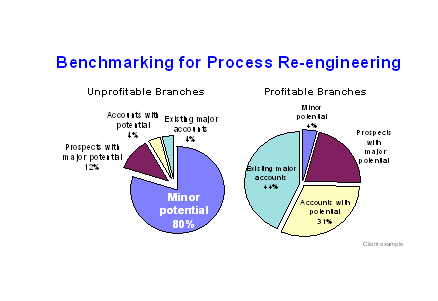Corporate Strategy, Organisation and Process Re-Engineering
for Managing Director, Keith Young Ltd (a building supplies distributor)
April 1989 through October 1989
Objective: to turn around and re-shape a new subsidiary of Pilkington PLC
Pilkington had just taken over a £23m turnover subsidiary in the building supplies industry. Its new management had a vision for the company, but needed to develop a corporate strategy which would be both realistic and as ambitious as possible, in spite of the company’s peripatetic past (Pilkington was about the fifth owner in eight years). With little central control and a very varied level of achievement from one organisational unit to another, a new company culture had to be developed, and new business processes put in place across the company. Finally, the new management wished to put in place a completely new organisation to start the business moving forward again.
Methodology / Analytics: an internal and external benchmarking review; branch performance and organisational linkage analysis; review of supply chain partner effectiveness; redesign of key business processes; organisational review and restructuring; change management implementation.
The company as a whole was compared with other nation-wide companies in its sector, and each of the branches was compared with one another, to identify differences in methods and cause and effect implications. Key issues included the degree to which the central marketing department was supporting the branches and correctly segmenting and identifying the size of the market available to them and their penetration level. Certain supply chain partners - both suppliers and distribution channels - were found to be particularly effective, while others were proving unable to adapt to the changes going on in the marketplace, or to redesigned business processes such as direct deliveries.
To enable the demonstrably successful managers to spread best practice through the rest of the organisation, we created a regional structure and wrote job descriptions and best practice manuals. Promising managers were trained and in some cases new ones hired to continue the process. Mutually supportive working relationships were set in place by management with the rest of Pilkington’s construction trading division, to optimise inventory holdings and make the most of its overall market presence.
Results: substantial profit and cash flow improvements identified and achieved, new systems implemented and innovations in supply chain introduced
The company was returned to profitability and increased its market share over the next year.
(The above project was carried by R Hirsch while at A T Kearney Ltd)
